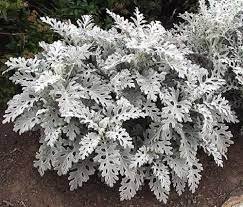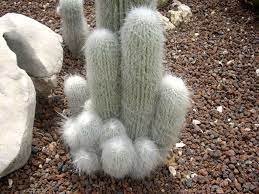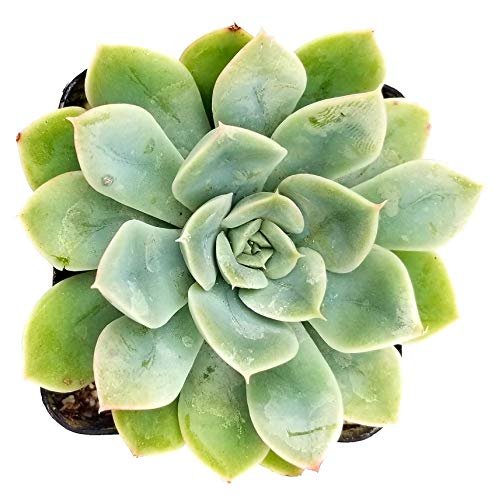Are you heard about leaves come in different shapes, colors, sizes, and textures? They can be smooth or itchy and big or small and even fuzzy. Yes, you heard that absolutely right. Velvety Plants look gorgeous and spongy to the touch. Velvety leaves can enliven your kitchen space with their cuteness and interesting foliage. If you have zoophobia or are allergic to pets, the fuzzy and velvety texture of these houseplants allows you to enjoy feeling like a pet’s fur.
If you are fed up with seeing monotonous or boring foliage around you and adding something unique, you can add a little forest to your kitchen with these elegant and remarkable fuzzy houseplants. The furry and wooly leaves of these indoor plants invite everyone to sit, hold the pot in the lab and feel their fuzzy texture with fingertips and thanks to nature.
Benefits of Fuzzy plants
- Tiny and soft hairs on the surface of leaves and stems can help to protect plants from environmental overarousal means the feeling stressed out.
- Tiny hairs can also assist to increase the humidity level in the air which enables plants to survive in a harsh and warm climate.
- Fuzzy plants have excellent communication skills. They not only give gorgeous look to your eyes but soothing effect by touching them.
- Fuzzy plants love that you touch them which helps you to develop a healthy relationship with plants. Touching your green friends can give your great pleasure.
Are you excited to add some fuzzy plants to your collection and give a soothing and stylish look to your kitchen? Let’s explore a list of fuzzy houseplants below and choose one of them for you.
Lamb’s Ear (Stachys byzantine)

Lamb’s Ear is one of the flowering members of the mint family and has thick and tiny oval-shaped fuzzy leaves. Its velvety and silvery-grey leaves are fuzzier than a bunny’s (a young rabbit) ear. If you live in drafty areas, you will find Lamb’s ear the best drought-tolerant velvety plant. This sun-lover plant can spread frequently so, keep it in a large area of your kitchen. This fast-growing plant is also known as Wooly betony. If you take care of this plant and fulfill its requirement, it will bestow you with tiny violet flowers on tall spikes in the form of a reward.
How to grow and Care for Lamb’s Ear Velvety Plants?
- Lamb’s Ear plant loves full exposure to the sun to thrive in cooler climates while it prefers partial shade in warm weather. High heat intensity and dry air can burn out the beauty of leaves.
- These perennials don’t need a lot of water because they are drought-tolerant and dislike sitting in soggy soil. When 2 inches of soil feel dry out to the touch then it is time to water your Lamb’s Ear. Avoid overwatering because it can kill your drought-tolerant plant.
- Never water your plant from the top of the leaves otherwise leaves will rot or face fungal leaf spots and powdery mildew if they receive an excessive amount of water.
- Lamb’s Ears enjoy sitting in well-drained and slightly acidic soil and they don’t need any fertilizer.
Dusty Miler (Senecio cineraria)

Dusty Miller becomes the center of attention for its aesthetic and stylish silver-grey ornamental foliage with yellow flowers. This grey-leaf shrublike perennial is native to the Mediterranean. The lobed-shaped and lacy leaves of Dusty Miler can grow up to 2-6 inches long. When tiny hairs of leaves are wet completely the underlying green color of the leaf is prominent. The combination of green leaves and white hairs looks like snow on the leaf. Dusty Miller looks shining and glowing in the moonlight. You can place it with other flowering plants that bloom in pink, white, magenta, or violet.
Basic Guide tips of Dusty Miller’s Care
- This drought-tolerant plant appreciates full exposure to the sun to thrive and discourages partial shade of sun except in extremely hot days of summer. If you place it in low indirect light, it becomes leggy or sluggish and it is a great oppression on it.
- Although it prefers moist, well-drained, and rich soil it can compromise with poor soil.
- Water regularly your green friend after planting and withhold water once the roots have developed.
- Dusty Miller loves warm weather so, protect it from bone-chilling cold and drafty areas.
Chenille Plant (Acalypha hispida, A. pendula)

Chenille is one of the most elegant and unique velvety plants with heart-shaped leaves and furry red flowers. Its fluffy red flowers look like furry red caterpillars moving downward. A hanging basket is an ideal room for the Chenille plant because it looks very pretty in it due to the long foliage. You can also place it in a spot where it can drape downward like over the edge of the ledge.
Basic Caring Tips for Chenille Plant
- Chenille adores bright indirect light to thrive and hates direct sunlight. Keep away it from the full exposure sun otherwise, it will lose the beauty of its foliage.
- Keep the soil moist but not soggy for the pleasure and satisfaction of your Chenille plant. You can use a soil probe tool to check the moisture level in the soil and allow the top 2-3 inches of soil to dry out before watering again.
- Chenille Plant prefers slightly acidic, loamy, and well-drained soil to grow properly.
Old Man Cactus – Velvety Plants

Old Man Cactus is also known as Bunny Cactus and White Persian Cat Cactus because of its furry white hair. It is a spiky, towering, and small cylindrical cactus with fluffy white hairs and a blue-green branchless stem. It is native to the arid regions of Mexico. Old Man Cactus looks amusing just like its name. It’s a hard nut to crack to kill this tough cactus with environmental overstimulation. A shaggy jacket of fluffy silver hair protects the cactus from the sweltering and tropical sun.
The long silver hair of Old Man Cactus conceals the sharp yellow thorns that can prick you, they hide an ominous secret. This furry googly-eyed Cactus is a slow-growing succulent and can meet the marvelous (incredible) height of 10 to 15 meters and more. This bunny Cactus can become a healthy and fully mature Cactus between 10 to 20 years and may produce a reddish-pink flower near the top of the stem in the hottest days of summer.
How to Grow and Care for Old Man Cactus?
- Old Man Cactus grows well in bright indirect sunlight so, keep it near the south-facing window where it can get enough bright indirect sunlight.
- It requires a well-draining pot and slightly acidic and nutrient-rich cactus soil to thrive.
- Brutal spines beneath the overloaded cuteness of Old Man Cactus are always ready to prick you, be careful to handle this itchy and grumpy plant.
- Water your cute cactus with a dry and soak method during the growing season but avoid watering during winter dormancy. You should use a moisture meter for the maintenance of the cactus.
Bear Paw Jade

Bear Paw Jade (Cotyledon tomentosa) is a small and outstanding fuzzy succulent plant. It has a cluster of thick, oval-shaped fuzzy leaves with pointy dark red edges. It may produce beautiful and small orange bell-shaped flowers n spring. They are the center of attraction to pests like other succulents.
How to Grow and Care for Bear Paw Jade?
- Bear Paw Jade is a sun lover and enjoys bright shaded spots where it can receive sufficient bright indirect light. Temperature below 30F may be harmful to Bear Paw Jade.
- Water your Bear Paw Jade ¼ Cup of water for smaller paws while ½ Cup of water for large paws once a week
- Water your green friend once every 2 -3 weeks during winter dormancy when the soil completely dries out otherwise your plant get start shriveling.
- It needs a fast-draining pot and slightly acidic and nutrient-rich succulent soil to thrive.
- Unlike other succulents, it can’t propagate by leaves. The cutting method is the fastest way to propagate the bear paw jade.
- If your plants suffer from pet diseases, use rubbing alcohol or neem oil to kill the pest.
Pussy Willow – Velvety Plants

If you are looking forward to a ticklish and versatile shrublike plant that can thrive both indoors and outdoors well, let me introduce you to a pussy willow. Its fuzzy and fluffy white catkins are looks stunning and gorgeous in the spring under the full sun. It is also known as glaucous Willow.
How to Grow and Care for Pussy Willow?
- Pussy Willow loves moisture so, always keep the soil slightly moist and loamy but not soggy.
- Pussy Willow grows well in full sun but it can tolerate partial shade.
- Eliminate all dead and damaged stems from the pussy willow.
- Pussy Willow loves cold weather as compared to warm weather.
Green Goddess – Velvety Plants

Green Goddess is one of the great velvety plants with a spongy rosette on its cluster of velvety and frosty green leaves. As one of the low-maintenance houseplants, it does not need a lot of water and great attention to thrive. Large, yellow-orange, and bell-shaped flowers bloom on the lax stem at the end of winter and the beginning of spring.
How to Grow and Maintain Green Goddesses?
- Green Goddess grows well in full sun to light shade so, you can place it in an east or west-facing window of your kitchen where it can get four to six hours of sunlight per day.
- They show their best in slightly acidic (pH around 6.0) and well-drained succulent soil.
- Water your Green Goddess on daily basis in summer and spring but not in winter. Let the top layer of soil completely dry between each watering otherwise, your green friend suffers from fungal diseases.
- Remove all dead and expire leaves from the plants because they may become cynosure (center of attention) for pests.


